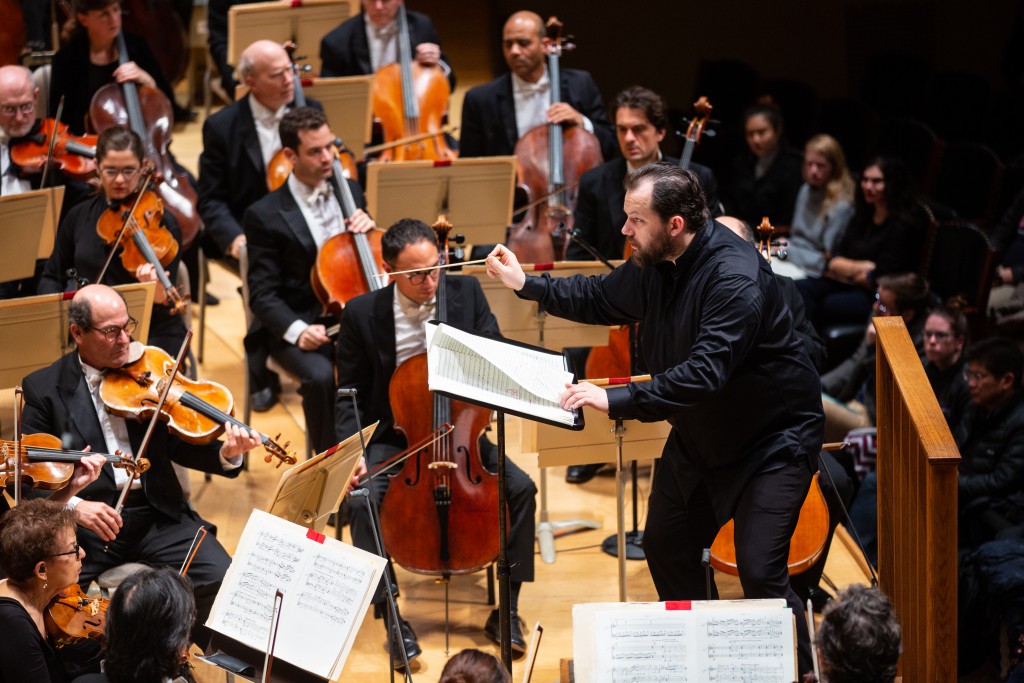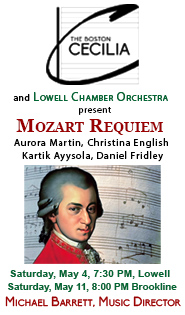Russian favorites soar with Nelsons, Boston Symphony

Andris Nelsons conducted the Boston Symphony Orchestra in music of Andris Dzenītis, Shostakovich and Tchaikovsky Thursday night at Symphony Hall. Photo: Robert Torres
Latvians celebrate the centennial of their country’s independence this month, and to commemorate the event, the Boston Symphony Orchestra and Leipzig Gewandhaus Orchestra have jointly commissioned a new score from Andris Dzenītis, one of that nation’s leading composers.
Dzenītis is extraordinarily prolific, yet his fame has so far been restricted to Europe. With the BSO-LGO alliance, however, his music is finding a wider audience. When the Boston Symphony and fellow Latvian Andris Nelsons offered his Māra in its American premiere Thursday night at Symphony Hall, it marked the first time that any of Dzenītis’ orchestral works have ever been heard in the United States.
Yet even though it contains some interesting moments, Dzenītis’ music, at least with this example, failed to make a lasting impression. His style bears all the hallmarks of mid-century European modernism. Brash dissonances sting the ear, and there is a sense of underlying lyricism as melodies struggle to escape his densely packed textures.
Named for the goddess of Latvian mythology who sees and knows all things, Māra unfolds in a collage marked by crystalline forms and unusual timbres over its eighteen minutes. Chattering phrases freeze into blocks of harmony that are left to hang in space for long periods of time. In the middle section, these sounds disperse energetically, yet the fragments remain splintered and course through the music in fitful starts and stops. The ending seemed contrived—hints of melody shatter into glassy percussion washes and the musicians are called upon to blow air through their instruments for a rather clichéd ending.
Listening to Dzenītis’ music is like looking at a mosaic, but the full picture, brimming with surfeit details, never seems to come into focus. Māra, though, is never gestural, and Nelsons’ energetic reading delivered firm direction and momentum.
The rest of the program featured Russian music by composers of widely different styles.
Shostakovich’s Symphony No. 1 may have been a youthful work (he completed it at the age of nineteen as a graduation project), but it is one of the finest in the genre, its biting sarcasm and brooding passages looking ahead to the composer’s later symphonies.
Nelsons’ version resulted in a Technicolor spectacle, but such an approach is well suited to this pastiche of waltzes, polkas, marches, and other ersatz styles the composer picked up in his days playing in piano bars. The first movement progressed with sly humor, and the rousing march that appears mid-movement exploded into the scene with fervor.
The conductor’s fleet tempos injected the second movement’s scherzo with palpable intensity, and the three hammering piano chords that fall toward the end of the movement, performed by Vytas Baksys, cut through the air with vigor. Cast in bold colors, the third movement’s quotations from Wagner’s Siegfried surged and subsided, the line never losing its lush, singing tone even in the quiet moments.
Darkness and wry humor shaded the finale, and Nelsons drew out particular solo highlights. Concertmaster Tamara Smirnova lofted an achingly beautiful violin phrase, to which French hornist James Somerville answered with a warm, radiant line. Timothy Genis’ thundering timpani strokes turned the movement briefly towards tragedy before the brass concluded the symphony with boldly projected fanfares. This latest offering in Nelsons multi-season survey of Shostakovich’s complete symphonies should make an excellent live recording.
Act 2 from Tchaikovsky’s The Nutcracker, which came after intermission, proved just as captivating.
The final act of this seasonal favorite features some of the most familiar music in the symphonic repertoire. In the ballet’s story, Clara and the Nutcracker Prince are in the Land of Sweets and, like royalty, watch as a series of dancers from around the world offer unique gifts of sound and movement.
Nelsons led a full and resplendent tour though Tchaikovsky’s mellifluous music. His swift and focused baton wrung every ounce of drama from the waltzes and “Pas de Deux.” The highlight of this performance was the Divertissement, which spotlighted the BSO’s superb soloists and sections. Trumpeter Thomas Rolfs performed the trickling melody of “Chocolate” with gleaming tone and idiomatic Spanish flavor. Woodwind phrases in “Coffee” seemed to hover in the air like smoke, and flutes played a bright and beaming “Tea” and a velvety “Dance of the Reed Flutes.” Baksys’ celeste figures brought childlike charm to the “Dance of the Sugar Plum Fairy.” The standout was principal harpist Jessica Zhou, who plucked out golden strands of melody in her opening cadenza to the “Waltz of the Flowers.”
The program will be repeated 1:30 p.m. Friday and 8 p.m. Saturday and Tuesday at Symphony Hall. bso.org; 888-266-1200
Posted in Performances
